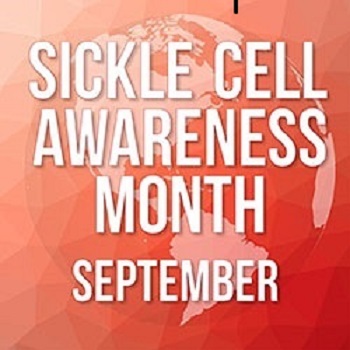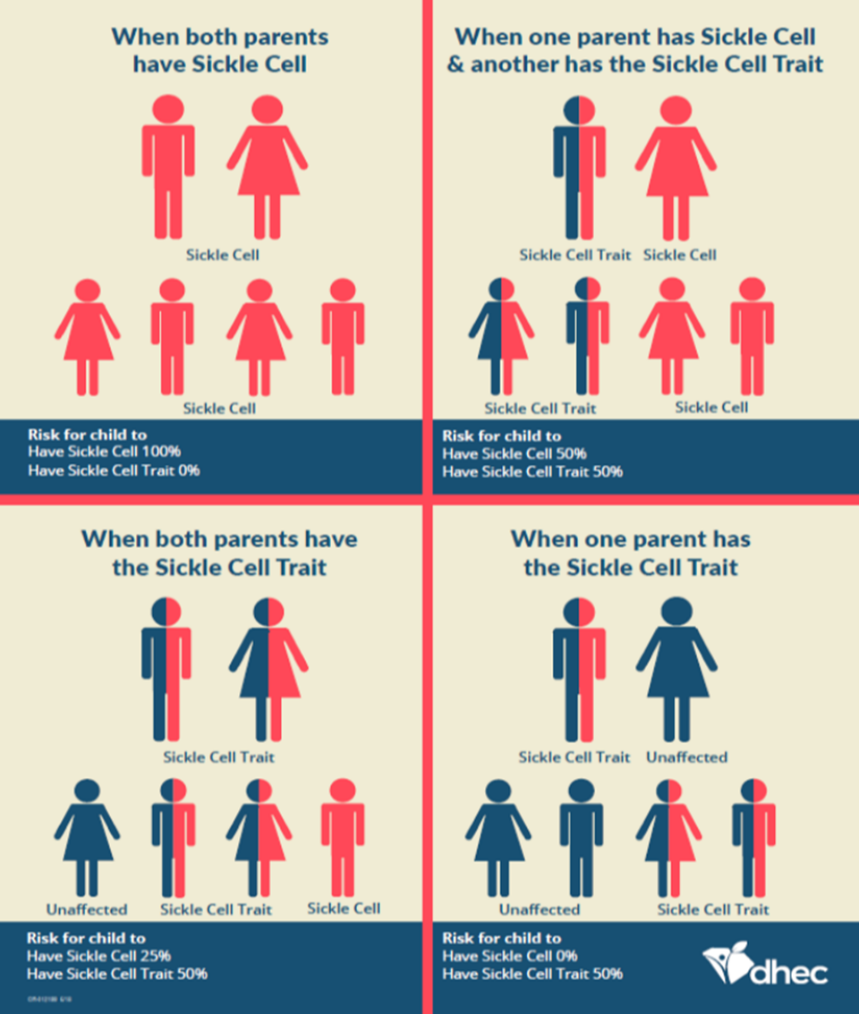Raising the Awareness Bar on Sickle Cell Trait and Sickle Cell Disease

September is National Sickle Cell Awareness Month. Let’s raise the awareness bar to highlight sickle cell trait and sickle cell disease.
What is Sickle Cell Disease?
SCD is a blood disorder that causes sickling of the red blood cells, which diminishes the amount of oxygen the red blood cell can carry throughout the body. Persons who have SCD suffer from crises — episodes of intense and excruciating pain that may be in one or multiple parts of the body when sickle-shaped red blood cells become stuck in a blood vessel and cause a disruption of blood flow in that particular area. While people are most familiar with sickle cell anemia, other variations of sickle cell, or mutations, include sickle cell thalassemia, sickle beta thalassemia, and others.
What is Sickle Cell Trait?
SCT results when a person inherits one sickle cell gene and one normal gene from either of their parents. Persons with sickle cell trait usually do not have any of the symptoms of SCD, but they can pass the trait on to their children.
How are SCT and SCD related?
An individual who has SCD has a family history of SCT – meaning the person’s parent(s) have sickle cell trait or sickle cell disease. SCD is inherited when a child receives two sickle cell genes from each parent. For someone who has SCT, the likelihood of having a child that has SCD or SCT is different. If both parents have SCT, there is a 50 percent chance the child will have SCT, a 25 percent chance the child may have SCD, and a 25 percent chance the child will not have SCD or SCT.
The urge to increase awareness on sickle cell trait and disease is apparent across several organizations. The Centers for Disease Control and Prevention released new informational materials and videos of individuals’ personal experiences living with sickle cell disease or sickle cell trait. To view these videos, visit cdc.gov/ncbddd/sicklecell/materials/video.html.
What is South Carolina’s response?
The South Carolina Sickle Cell Disease Advocacy Team (SCSCDAT) was established in 2017 with one common goal – to improve the treatment and care received by individuals and their families who have sickle cell disease. A multidisciplinary team comprised of physicians, hematologists, government agencies, non-profit organizations, healthcare management organizations, and individuals living with SCD and their family members, has been working on a statewide sickle cell disease plan to address the lack of resources to proficiently care and treat individuals of all ages living with sickle cell disease. The plan will help coordinate and improve collaboration in the areas of education, outreach, treatment, and funding.
Community-based organizations at work
Currently, DHEC maintains partnerships with four sickle cell community-based organizations — the James R. Clark Memorial Sickle Cell Foundation, the Louvenia D. Barksdale Sickle Cell Anemia Foundation, the Orangeburg Area Sickle Cell Foundation and the COBRA Human Services Agency Sickle Cell Program. Through these partnerships, more people with sickle cell are able to obtain services and support. These organizations work to provide education, counseling, testing for sickle cell trait, and family support.
Although September is National Sickle Cell Awareness Month, increasing public and community knowledge about sickle cell is a 365-day initiative. Raise the awareness bar on sickle cell trait and sickle cell disease.
If you have questions about testing for you or your family, you can visit one of the four sickle cell community-based organizations. For more general information about sickle cell, visit cdc.gov/sicklecell or www.nhlbi.nih.gov/health/health-topics/topics/sca.
